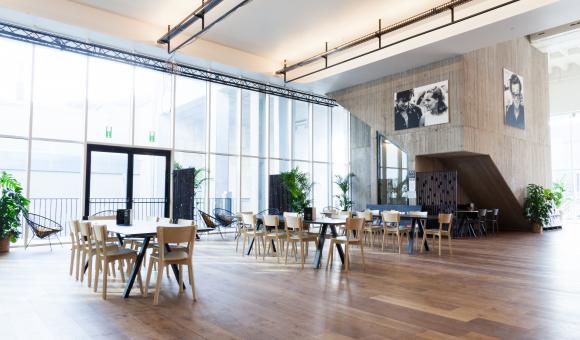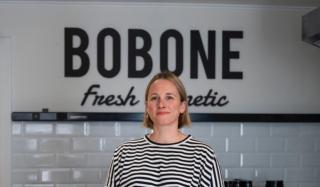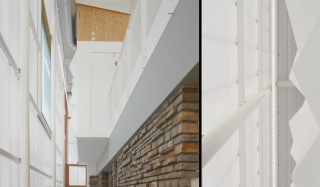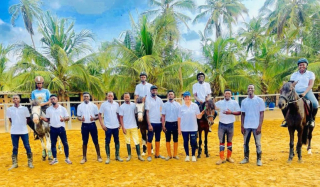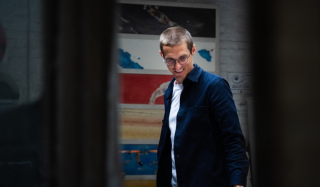From the magic lantern to the praxinoscope to the modern multiplex, the moving image has come a long way over the centuries. In the digital age, cinematic storytelling has even gone interactive with a new generation of narratively sophisticated – and visually spectacular – video games. Charleroi’s newest cultural complex, Quai10, celebrates the motion picture in all its contemporary forms: cinema, gaming and digital arts.
“The project was born from a need and an opportunity,” director Matthieu Bakolas says. “On one hand, nearly all of Charleroi’s cinemas have closed over the years. Only Ciné le Parc has survived. On the other, the city received European regional development (Feder) funds to rehabilitate the old Banque Nationale headquarters as a cultural venue. The city decided to address the need for quality cinema in the context of the Feder mandate while adding the related domains of gaming and digital arts.”
The connection between these media isn’t obvious but it is crucial to understanding Quai10 and, Bakolas argues, contemporary culture.
“Cinema defined the moving image in the twentieth century,” he says, “and gaming will no doubt define it in the twenty-first. They are the two biggest entertainment industries, but neither is strictly entertainment. They both open the door to participation, education and artistic creativity. By bringing them together under one programme, we’re going to show just how much they have in common.”
Inaugurated in January 2017, Quai10 encompasses Ciné le Parc, whose renovated 227-seat theatre is devoted to cinema, and Quai10 proper, the old bank building transformed into a complex of multipurpose spaces including four movie theatres, two exhibition spaces, a massive gaming room and a restaurant. Its grand opening weekend was everything the director and his team could have hoped for.
“We were warmly welcomed,” Bakolas says, “especially by the public. With 40,000 cinema viewers and 3,000 gamers through our doors so far, we’ve beaten all projections. A community has formed around Quai10 and that’s a big accomplishment.”
Visitors can expect the same carefully curated programming that defined Charleroi’s last remaining cinema, but on a grander scale.
“The cinema programme is in line with what Ciné le Parc has been screening for years,” Bakolas says, “which is to say quality films, mostly Belgian and European productions. All foreign films are presented in their original version. Since we have five fully equipped rooms at our disposal, we’re able to offer more and different films. Some will be more art-house and others more mainstream.”
Quia10 takes the same art-meets-pop approach to gaming. Its bustling game room is open every day except Monday and entry is free.
“We present the video game as a cultural and artistic form,” says Bakolas. “Every month we curate a new selection of thirteen games. The emphasis is on independently produced games but we’re also dedicated to inclusivity, which means we’re not afraid to present commercial favourites that both novices and experts can enjoy.”
It’s not just fun and games, either. Education is part of Quai10’s mission too. “Learning is the cornerstone of our project,” he says. “We organise many school activities in which both film and video games are used for educational ends. Games in particular are such versatile tools. Almost any subject can be illustrated – even experienced – through video games, from philosophy to history, from geometry to foreign languages.”
All this is only the most recent episode in Charleroi’s ongoing renaissance. The industrial city has come full circle. Once a thriving hub of industry, it later became the poster child of de-industrialisation and its attendant woes. Now local, regional and European authorities are joining forces to revitalise the city.
Quai10 couldn’t be better situated to participate in this revival. Its main digs, built in the 1960s and recently renovated by contemporary Brussels architect firm V+, are right in the heart of Charleroi’s urban redevelopment zone. With the arrival of the Rive Gauche shopping centre and initiatives like La Manufacture Urbaine, the surrounding Ville-Basse district has changed entirely.
“We’re happy to be a part of the renaissance,” the director says. “The city has numerous cultural venues, of course. Some are long-established and some are brand new, but all are committed to reinvigorating the city’s artistic scene. Charleroi is back on the Belgian cultural map, thanks in part to these spaces.”
This article first appeared in the Wab magazine, summer 2017
